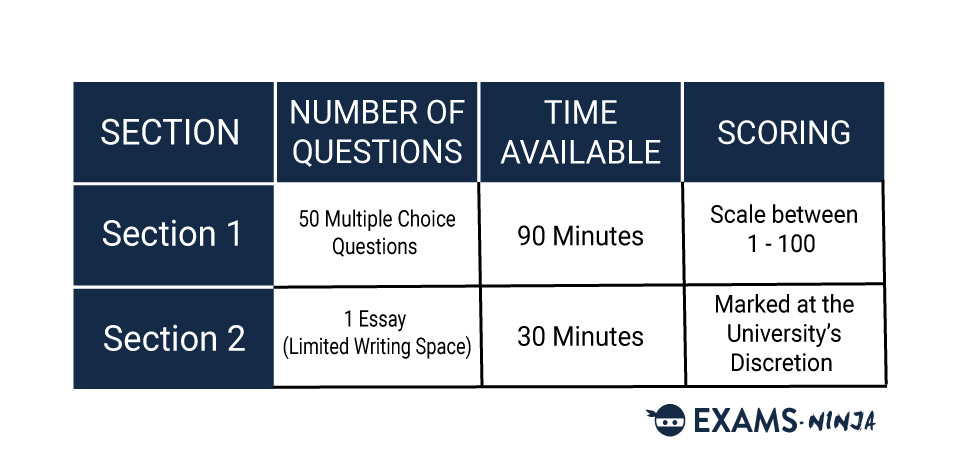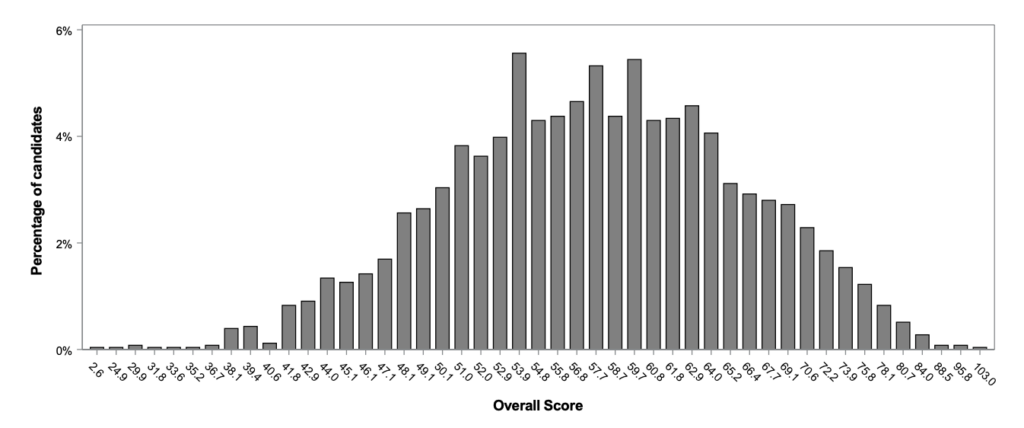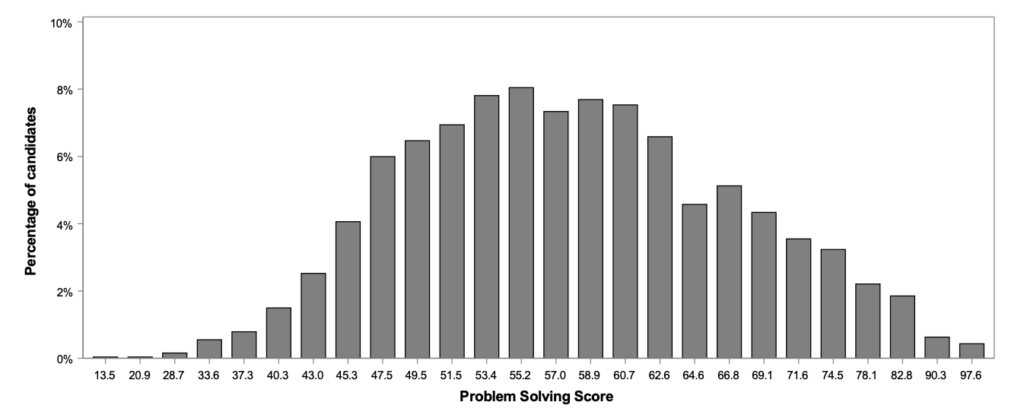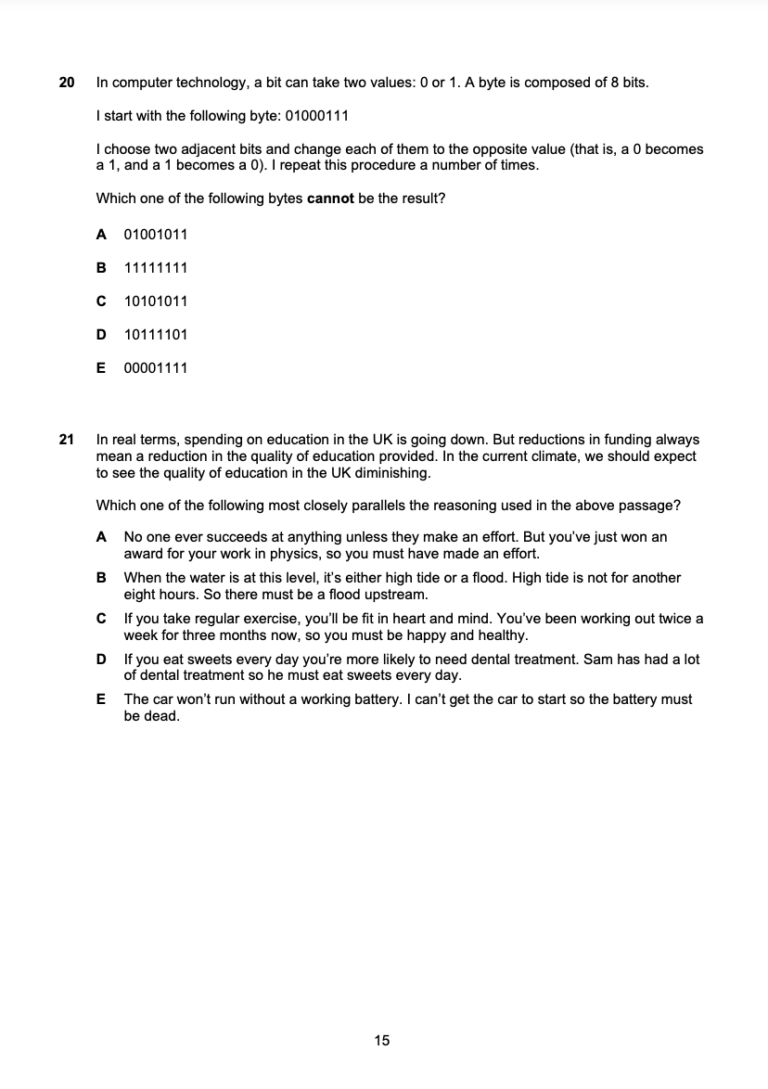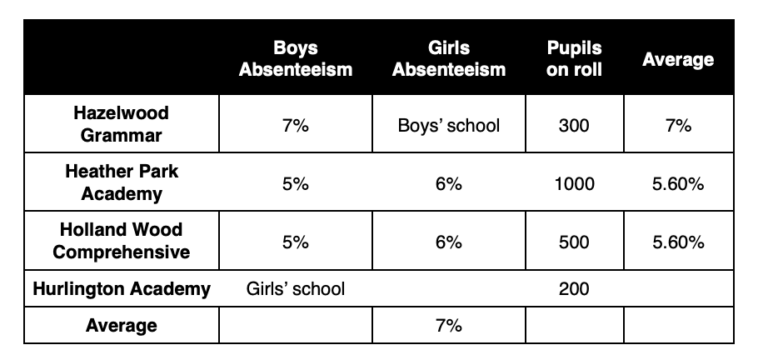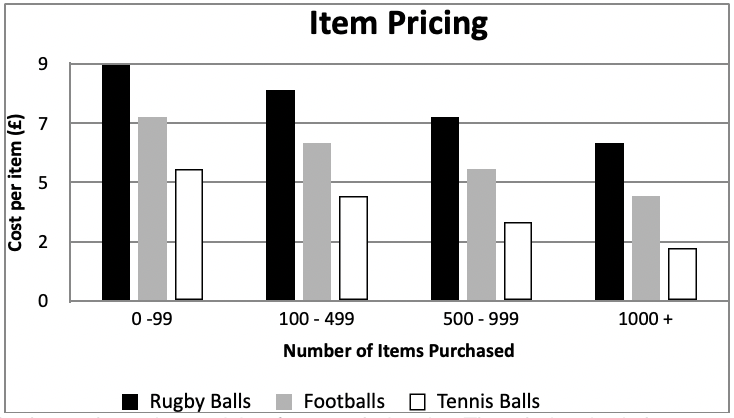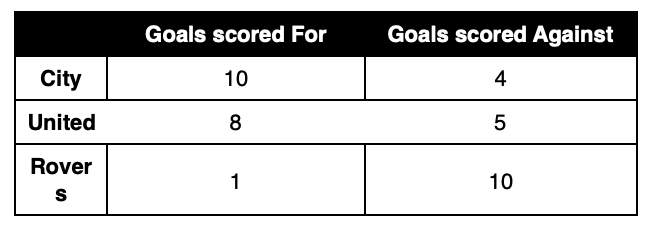TSA Guides
The Ultimate Guide to Problem Solving in TSA Section 1
Written by: Matt Amalfitano-Stroud
Section 1 of the TSA is split into two major question types: Problem Solving and Critical Thinking. Problem Solving is an extremely general term, so what does it mean in regards to your admissions test? Let’s take a look at what you need to know in order to solve every problem in the TSA!
1/5
THE BASICS OF THE TSA
First things first, you’ll need to make sure you know everything about how the TSA works. Let’s take a minute to go over the basics of the exam so you’re prepared for the exam!
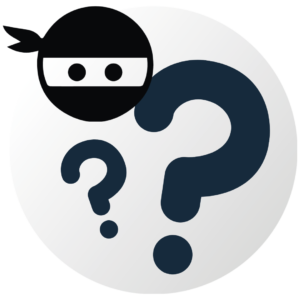
What is the TSA?
The Thinking Skills Assessment (TSA) is a 90-minute – 2-hour long test that is used by the University of Oxford. It covers a large variety of subjects, from Psychology to PPE, so the content of the exam isn’t subject-specific.
There are two Sections in the TSA, the 90-minute multiple-choice section (Section 1) and the 30-minute essay writing section (Section 2).
In Section 1, you will have to answer a total of 50 questions based on two major principles, Problem Solving and Critical Thinking. Problem Solving involves numeracy-based questions while Critical Thinking tests your reading and deduction abilities.
Section 2 asks you to write a short essay answering one of four available questions. These questions are very general and cover a wide variety of topics, including ethics, politics and current affairs. Your time is limited in this Section so your answer won’t be as extensive as a typical essay. Bear in mind that this section is only included in some versions of the TSA Oxford, meaning only certain Oxford applicants will need to complete this.
TSA Structure
How is the TSA Scored?
Scoring for the TSA is quite unique compared to other admissions tests. Both sections of the TSA have different marking schemes due to the variance in question type.
The process of marking Section 1 involves taking the raw marks from the assessment and converting them into a score on a scale roughly between 1 and 100, which will be your final result. This scale does not have a consistent conversion from year to year but is instead adjusted based on the difficulty of the paper.
As an example of the scoring, here you can see the score distributions for the Oxford TSA for the 2023/24 admission cycle:
As you can see here, the majority of applicants scored within the high 50’s and 60’s in the Problem Solving portion of the TSA.
When is the TSA sat?
Applicants sitting the TSA Oxford will be taking the test on October 24th at an approved testing centre.
You will need to register for the TSA online, with registrations starting from August 15th.
2/5
WHAT YOU NEED TO KNOW ABOUT TSA SECTION 1
Section 1 of the TSA isn’t especially complicated as far as exams go, but knowing what you can expect to find when you start the exam will be extremely beneficial for you. Let’s go over what Section 1 looks like and how it functions.
There’s nothing here that should be especially mind-blowing to you, it’s a pretty standard test. There are, however, a couple of things that may catch you out, the main one of these being the question organisation.
Some admissions tests will split different types of questions into subsections, but that isn’t the case here. All of the 50 questions are mixed together between Problem Solving and Critical Thinking, with no specific order between the two (although the specification states that the questions are roughly in ascending order of difficulty). This shouldn’t cause any major issues, but you will just need to remember that you’ll be constantly hopping between two different mindsets (don’t worry, it’s not as difficult as it sounds once you’ve gotten some practice).
As for the questions themselves, you’ll have five potential answers to pick from, which are labelled A – E. Some pages will contain two questions, while other pages will contain just one longer question.
You will be able to do any working out or note-taking on the question paper. In fact, it’s recommended to do so as you will not be permitted any additional paper in the exam. You also won’t be allowed to bring in any additional resources, including calculators and dictionaries.
TSA preparation can be daunting, but Exams.Ninja has the perfect solution!
The Exams.Ninja TSA Preparation Platform is ideal for any stage of your exam prep, from your first steps down to your last minute revision. There are tons of resources available to you instantly when you sign up, so create your free account now to see how you can optimise your preparation!
3/5
THE ESSENTIAL SKILLS FOR TSA PROBLEM SOLVING
Now it’s time to look at the skills you’re going to need to solve any problem the TSA throws at you. Spoiler alert: it’s going to involve maths!
We already touched on it briefly before, but Problem Solving questions within the TSA are all focused on testing your basic mathematical abilities. If you’re not currently studying mathematics, there’s no need to fret. The maths that’s required here won’t be any more taxing that the level you would have studied at GCSE or equivalents.
The challenge in these questions doesn’t come from pure mathematics. Instead, they are testing your ability to use simple mathematics in practical, real-world scenarios. The question can involve anything from analysing train times to calculating postage costs.
With that being said, you’re still going to be skilled in some areas of mathematics, so let’s go through the different disciplines you’ll need to revise, according to the TSA Specification:
Number Concepts
This is the most basic you can get with mathematics, but it’s still essential knowledge at the end of the day. The TSA is going to have plenty of questions surrounding fractions, percentages, decimals and place value, so you need to make sure you won’t be getting caught up at the first hurdle!
Numerical Operations
Again, this is extremely simple, but you’re going to need to know the “four number rules”, addition, subtraction, multiplication and division. As well as whole numbers, you’re also going to need to be able to use these basic functions in regards to fractions, decimals and percentages.
These won’t be too complicated but imagine the kinds of calculations you would need to do in real life. For example, you’d need to be able to subtract a percentage of a whole number (or even a decimal number) in order to work out the cost of an item on sale, a scenario that could very well appear in the test!
On top of all this, you’re going to need to know how to calculate the average, or mean, of a collection of values:
m = sum of the terms/total of terms
Units of Measurement
Many of the Problem Solving questions in the TSA will be based around one or more of these units. You will likely have encountered all of these frequently throughout your life, so the key knowing how to use them in a problem-solving context. These units are:
- Time and Dates (Minutes, Hours, Days, Months, Years)
- Currency (the TSA will typically only use British Pounds unless otherwise stated)
- Distance Measures (Kilometres, Meters, Centimetres)
- Weight Measures (Grams, Kilograms, Litres)
Note that some questions may require you to work with other units, specifically distance and weight measurements that are outside of the metric system (inches, feet, tonnes and gallons). However, these questions will not require you to convert values between two different measurement systems.
Space and Spatial Reasoning
You’re going to need a basic knowledge of geometry in some questions, starting with knowledge of the measurements for different aspects of a shape.
- Area – For example, a rectangle would be calculated by Area = Length x Width.
- Perimeter – For example, a rectangle would be calculated by Perimeter = (Length + Width) x 2.
- Volume – For example, a cuboid would be calculated by Volume = Length x Width x Height.
You’re going to need to be able to use all three of these calculations, although the shape will usually be relatively simple. Trigonometry isn’t covered in the TSA specification.
Tables and Graphs
Lastly is the ability to extract data from tables and graphs. The graphs used in the TSA may not be to scale, but the necessary data that you will need to collect from them will always be available in some form!
Exams.Ninja Tip
If your current studies don’t heavily depend on maths, you’ll need to sharpen your skills ready for the TSA. Even though all of this knowledge may seem basic on paper, there’s a good chance you’ll have forgotten something since your last mathematics exam!
The best way to see if there are any gaps in your knowledge is to take a past paper. The TSA only covers mathematics to a GCSE level, so you won’t need to be taking a TMUA or MAT past paper! If you find that you’ve breezed through it with no issues, then great! You shouldn’t have any trouble tackling the maths included in the TSA. And if there were any areas that you struggled with, then it’s time to start revising!
Our TSA 6-Month Preparation Timeline fully explains how you can best use your time and resources before the exam, including when you should use past papers and practice questions!
As we said, this is all very basic stuff. But remember, the TSA isn’t a pure mathematics exam. Many questions in the test will require you to juggle several of these disciplines at the same time, all while trying to solve the problem based on the context of the scenario itself. These questions will have a lot more variables than a pure maths question, as well as more elements that are designed to catch you out.
Some questions will include irrelevant pieces of information that only serve to make you confused or create errors in your working out. The best way to avoid this is to thoroughly read through the question, data and available answers. These questions can catch you out, but only if you rush through them and pay no attention to the extra details that a TSA question can bring. When you pay attention, you won’t find it hard to pick out the relevant information and ignore anything you don’t need.
4/5
THE QUESTION TYPES OF TSA PROBLEM SOLVING
Most of the Problem Solving questions in Section 1 of the TSA can be split into three categories. Each one will be testing a different skill outside of pure mathematics, so let’s go over the three major question types and see how you can answer each one in the exam.
Relevant Selection
This is something we’ve touched on already, but the TSA questions aren’t going to be as direct as your standard mathematical problem. These questions are designed to mimic real-world scenarios, which means they will have additional context and information. As we know, this information isn’t all going to be useful to us. In fact, it’s pretty uncommon that you’ll be given only what you need in both the TSA and real life!
Therefore, some questions in the TSA specifically test your abilities to find the information relevant to you. These questions can take many forms, including graphs, lists and tables, but they all serve the same purpose of providing you with excess information that will not help you in solving the problem. You’re still going to need to solve a standard mathematical problem at the end of it all, but you’re going to need to cut through the rubbish and determine what you need before you can even think about finding the solution.
There are a lot of questions to answer and only 90 minutes to get through them, so is there a fast method of doing this? Unfortunately, there isn’t really a shortcut to get to the answer quicker for these questions. We always say this, but reading through everything in the question is essential. It may feel like you’ve wasted time reading something that’s not useful, but rushing through the information provided will increase your chances of missing something you actually do need. If you lose the point because you’ve missed something vital, the entire time spent on that question will be wasted instead.
Exams.Ninja Tip
Some of these questions will benefit from the process of elimination. For example, you may need to identify individuals from a table of data that meet several different criteria. Provided you’ve read the question first and know exactly what you’re looking for, you should be able to find out very quickly whether an individual meets the criteria or not. If just one criterion is not met according to the data, then that individual can be considered not applicable. This won’t work for every question, but it’s certainly a tactic that can help save a little bit of time.
Finding Procedures
A typical TSA question isn’t going to explicitly state what kind of mathematical procedure you’re going to need to use to solve a problem. When you’re simply given a set of data and a question, it can be tricky to know where to begin, which is the point of these types of questions. Even if the actual calculations aren’t too difficult, the challenge here comes from knowing what you need to do.
Since all of these questions are multiple-choice, you’re already at an advantage when you encounter this type of problem. After you’ve thoroughly read the question and answers, your next step is to find the link between the two. The question you need to ask yourself is, “How do I get this answer from the available information?”.
One way of solving this effectively is to work backwards from each answer. Even if your first attempt doesn’t match the question exactly, you will be able to tell if you’re using the right procedure if your result is close to what the question has asked. From there, it’s just a simple process of applying your procedure to each answer until you’ll find a solution that matches the question.
Exams.Ninja Tip
Remember, the maths featured in the TSA isn’t particularly complex, so most of the procedures that you’re going to need to find will be covered in the “four number rules”. If you have no idea where to start on a question, try out some combinations of these four functions and see how close your solutions are to the potential answers.
Identifying Similarity
These questions are going to test your ability to read and interpret data in multiple forms. The question may ask you to find a correlation between data or match two specific pieces of data together according to the context of the question, but the process for doing this will always require you to understand everything that is given to you.
The first two things to do when answering these questions are to make sure to know exactly what the question is asking and then go through all of the data to get an understanding of what you’re dealing with. This type of question is going to be the biggest test of your data analysis skills, as you’re going to need to be able to both identify and work with specific pieces of data from what you’ve been given. When taking into account that there are two different types of data presented in two different formats, you’re also going to need to be able to convert data into one universal format that will fit both pieces together in order to find the solution to the problem.
Exams.Ninja Tip
Throughout the exam, you’ll see plenty of visual elements within the questions, including graphs and tables. These are already very handy on their own, but you can get even more use out of them by using them in your notes. Remember, the question paper doesn’t get seen by the examiner and has no effect on your marks, so you might as well use the space for your rough work!
In a sense, these questions can be seen as a combination of the first two question types, as you’ll be needing to find similarities in data and then figure out the procedure needed to give you your answer from them. This, combined with the fact that you’re working with two different types of data, may make these questions seem far more difficult than the others! But in reality, the data you’ll be working with is often much less extensive than other questions, meaning your search for what you need shouldn’t be too hard. The challenge here doesn’t come from looking for data but from understanding all of the data that you’re given.
Try out some practice questions on Identifying Similarities here!
Test your Problem Solving skills with Exams.Ninja.
Our TSA Preparation Platform includes over 500 practice questions and 19 past papers to give you the ultimate TSA preparation experience. Sign up for free to see for yourself!
5/5
TSA PROBLEM SOLVING PRACTICE QUESTIONS
With your newfound knowledge of the different Problem Solving question types, it’s now time to have a go at a few examples. Try out our TSA style questions here and then check your answer and method with our worked solutions.
Relevant Selection Practice Question 1
My hairdresser charges £30 for a haircut, £50 for a cut and blow-dry, and £60 for a full hair dye. They also do manicures, of which the first costs £15, and includes a bottle of nail polish, but are subsequently reduced by £5 if I bring my bottle of polish. The price is reduced by 10% if I book and pay for the next 5 appointments in advance, and by 15% if I book at least the next 10.
I want to pay for my next 5 cut and blow-dry appointments, as well as for my next 3 manicures. How much will it cost?
A) £170
B) £255
C) £260
D) £285
E) £305
The correct answer is C
Bear in mind that the information regarding full hair dyes and 15% reductions is not relevant to the question.
Paying for my next 5 appointments will cost £50 per appointment before accounting for the 10% reduction, hence the cost counting the deduction is £45 per appointment.
So the total for 4 appointments = 5 x £45 = £225 for the hair. Then add £15 for the first manicure and £10 x 2 for the subsequent manicures using the same bottle of polish, bringing an overall total of £260.
Relevant Selection Practice Question 2
Alex is buying a new bed and mattress. There are 5 bed shops Alex can buy the bed and mattress he wants from, each of which sells the bed and mattress for a different price as follows:
- Bed Shop A: Bed £120, Mattress £70
- Bed Shop B: All beds and mattresses £90 each
- Bed Shop C: Bed £140, Mattress £60. Mattress half price when you buy a bed and mattress together.
- Bed Shop D: Bed £140, Mattress £100. Get 1/3 off when you buy a bed and mattress together.
- Bed Shop E: Bed £175. All beds come with a free mattress.
Which is the cheapest bed shop for Alex to buy the bed and mattress from?
A) A
B) B
C) C
D) D
E) E
The correct answer is D
We can work out the Answer by considering each option:
Bed Shop A: £120 + £70 = £190
Bed Shop B: £90 + £90 = £180
Bed Shop C: £140 + (1/2 x £60) = £170
Bed Shop D: (2/3) x (£140+£100) = (2/3) x (£240) = £160
Bed Shop E: £175
Therefore the cheapest is Bed Shop D.
Relevant Selection Practice Question 3
Some of the information is missing from the above table. What is the rate of girls’ absenteeism at Hurlington Academy?
A) 6.5%
B) 7%
C) 9%
D) 11.5%
E) 13%
The correct answer is D.
We can first work out the rate of girls’ absenteeism. First we need to work out how many of the pupils at Heather Park Academy and Holland Wood Comprehensive are girls. Let g be the number of girls in Heather Park Academy. Then 0.06(g)+0.05(1000-g)=(1000)(0.056). Then 0.06g-0.05g=56-50. Then 0.01g=6, so g = 600. Hence 600 pupils at Heather Park Academy are girls. The proportions at Holland Wood Comprehensive are the same but there are half as many pupils, so 900 pupils at the two schools combined are girls.
The average absenteeism of girls is 6.1%. We know that 900 of the 1100 girls have an average absenteeism rate of 6%. Let the average absenteeism rate of girls at Hurlington Academy be r. Then 900 x 0.06 +200r = 0.07×1100. Hence 54+200r=77. 77-54 = 200r. 23/200 = r. r=0.115. Hence, the rate of absenteeism amongst girls at Hurlington Academy is 11.5%.
Finding Procedures Practice Question 1
Jim washes windows for pocket money. Washing a window takes two minutes. Between one house and the next, it takes Jim 15 minutes to pack up, walk to the next house and get ready to start washing again. Each resident pays Jim £3 per house, regardless of how many windows the house has. In one day, Jim washes 8 houses, with an average of 11 windows per house.
What is his equivalent hourly pay rate?
A) £4.38
B) £4.86
C) £5.12
D) £5.62
E) £6.12
The correct answer is C.
First, calculate the total pay and then divide this by the number of hours Jim works for an hourly rate.
Total pay = 3 x 8 = £24; total time = (11 x 8 x 2) + (15 x 7) = 281 minutes = 4.68 hours. 24/4.68= £5.12 [the total time is equal to the number of windows in total multiplied by the time taken to clean each window, plus the time travelling between the houses, which is 15 multiplied by the 7 journeys required].
Finding Procedures Practice Question 2
The last 4 digits of my card number are 2 times my PIN number, plus 200. The last 4 digits of my husband’s card number are the last four digits of my card number doubled, plus 200. My husband’s PIN number is 2 times the last 4 digits of his card number, plus 200.
Given that all these numbers are 4 digits long, whole numbers, and cannot begin with 0, what is the largest number my PIN number can be?
A) 1074
B) 1174
C) 2348
D) 4096
E) 9999
The correct answer is A.
We know the husband’s PIN number must be divisible by 8 because it has been multiplied by 2 3 times and had a multiple of 8 added to it.
The largest 4 digit number which is divisible by 8 is 9992. Minus 200 is 9792. Divide by 2 is 4896. Hence the largest the husband’s last 4 card digits can be is 4896.
Minus 200 is 4696. Divide by 2 is 2348. Hence the largest my last 4 card digits can be is 2348. Minus 200 is 2148. Divide by 2 is 1074. Hence the largest my PIN number can be is 1074.
Finding Procedures Practice Question 3
Hannah is buying tiles for her new bathroom. She wants to use the same tiles on the floor and all 4 walls, and for all the walls to be completely tiled apart from the door. The bathroom is 2.4 metres high, 2 metres wide and 2 metres long, and the door is 2 metres high, 80cm wide and at the end of one of the 4 identical walls. The tiles she wants to use are 40cm x 40cm.
How many of these tiles does she need to tile the whole bathroom?
A) 110
B) 120
C) 135
D) 145
E) 150
The correct answer is C.
For each of the walls where there is no door, the wall is 6 tiles high and 5 tiles wide, which is 30 tiles. The wall where the door is requires a row of 2 tiles above the door, then there is a width of wall of 120cm which requires completely tiling, which is 6 tiles high and 3 tiles wide, hence this wall requires a total of 20 tiles. Hence a total of 110 tiles are required for the walls. The floor is 2 metres by 2 metres, so 5 tiles by 5 tiles, hence 25 tiles are required for the floor. Hence the answer is 135.
Identifying Similarity Practice Question 1
The set two maths teacher is trying to work out who needs to be moved up to set one and who to award a certificate at the end of term. The students must fulfil certain criteria:
Who would move up a set and who would receive a certificate?
A) Bahara would move up a set and receive a certificate.
B) Bahara and Lucy would move up a set and Bahara would receive a certificate.
C) Bahara, Terry, and Lucy would move up a set and Bahara and Shiv would receive a certificate. D) Lucy would move up a set and Bahara would receive a certificate.
E) Lucy would move up a set and Bahara and Terry would receive a certificate.
The correct answer is B.
Firstly, determine who will move up to set one. Terry, Bahara, Lucy, and Shiv all have attendance over 95%. Alex, Bahara, and Lucy all have an average test mark over 92. Terry, Bahara, Lucy, and Shiv all have less than 5% homework handed in late. Therefore, Bahara and Lucy will both move up a set.
Secondly, determine who will receive a certificate. Terry, Bahara, Lucy, and Shiv have absences below 4%. Alex, Bahara, and Lucy have an average test mark over 89. Bahara and Shiv have at least 98% homework handed in on time.
Therefore, only Bahara will receive a certificate.
Identifying Similarity Practice Question 2
The graph above shows item pricing from a wholesaler. The wholesaler is happy to deliver for a cost of £35 to companies or £5 to individuals. Any order over the cost of £100 qualifies for free delivery. Items are defined as how they come to the wholesaler, therefore 1 item = 2 rugby balls or 1 football or 5 tennis balls.
What is the total cost to an individual purchasing 12 rugby balls and 120 tennis balls?
A) £17
B) £179
C) £208
D) £534
E) £588
The correct answer is A.
Begin by converting all the quantities into terms of items as that is the terminology used on the graph axis. Therefore 12 rugby balls = 6 items and 120 tennis balls = 24 items. Reading from the graph reveals their respective prices as £9 and £5.
Therefore, the total cost of products in the order is (6 x 9) + (24 x 5) = 174. Since this is significantly more than £100, the delivery charge is waived.
Identifying Similarity Practice Question 3
The table above shows the goal scoring record of teams in a football tournament. Each team plays the other teams twice, once at home and once away. Here are the results of the first four matches:
- United 2 – 2 City
- Rovers 0 – 3 City
- City 2 – 1 Rovers
- Rovers 0 – 3 United
What were the results of the final two fixtures?
A) United 2 – 0 Rovers, City 0 – 0 United
B) United 1 – 0 Rovers, City 1 – 1 United
C) United 0 – 0 Rovers, City 2 – 1 United
D) United 1 – 0 Rovers, City 2 – 2 United
E) United 2 – 0 Rovers, City 3 – 1 United
The correct answer is E.
In Rovers’ first 3 games, they have scored 1 goal and had 8 goals scored against them. In total they scored 1 goal and had 10 goals scored against them, so they must have lost their last game against United 2-0.
In City’s first 3 games, they scored 7 goals and had 3 goals scored against them. In total they scored 10 goals and had 4 goals scored against them. Hence they must have won their game against United 3-1. Hence the answer is E.
So there you have it! You should now be able to go into Section 1 of the TSA with the confidence that you’re prepared for every kind of problem it wants you to solve! That’s not to say that you shouldn’t prepare for something unexpected, there are times when the test will throw you a question that doesn’t quite fit into any of these categories. However, these are usually pretty straightforward problems, such as pattern identification, probability or simple equations. As long you’ve prepared your mathematical knowledge to the best of your ability, you shouldn’t have any issues getting a great score!
Remember, Problem Solving is only half the story. If you want to learn more about the Critical Thinking portion of Section 1, check out our Definitive Guide now!
Solve your TSA preparation problems today with Exams.Ninja!
With our TSA Preparation Platform, you’ll have access to all the resources you could need to maximise your chances of success in the test! Within the platform, you’ll be able to find all of this amazing content:
Training Temple- There’s 29 expert tutorials to explore, teaching you everything you need to know about succeeding in the TSA.
Practice Dojo- Take on our collection of over 500 practice questions and learn the best methods to take on each one with worked solutions.
Exam Arena- With 19 TSA past papers to attempt, you’ll have plenty of experience taking the TSA before the real thing!
Create your free account to see how you can become a TSA Master!

